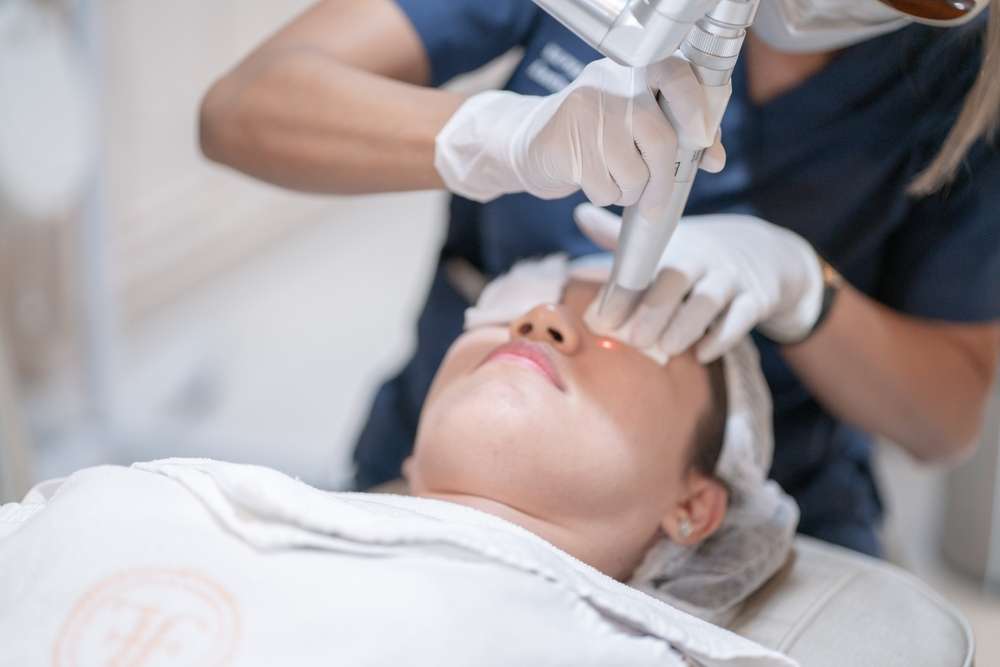Advanced Dermatological Procedures: Modern Skin Solutions
Advanced laser technology has revolutionized dermatological care, offering precise solutions for various skin conditions. From acne scarring to age spots, these medical procedures utilize focused light energy to target specific skin issues with minimal downtime. Understanding how these treatments work and their applications can help individuals make informed decisions about their skincare journey.

Discovering the Benefits of Laser Surgery Clinics
Laser surgery clinics have transformed the landscape of cosmetic and medical dermatology. These specialized facilities utilize cutting-edge technology to address a wide range of skin concerns through non-invasive and minimally invasive procedures. The precision of laser systems allows practitioners to target specific areas without affecting surrounding healthy tissue, making treatments both effective and safe when performed by qualified professionals.
The technology behind these procedures involves concentrated beams of light that penetrate the skin at varying depths. Different wavelengths target specific chromophores in the skin, such as melanin in pigmented lesions or hemoglobin in vascular conditions. This targeted approach enables practitioners to customize treatments based on individual skin types and specific concerns.
Benefits of Laser Surgery for Skin Conditions
The advantages of laser treatments extend beyond cosmetic improvements. Medical applications include treating precancerous lesions, removing unwanted tattoos, and addressing vascular malformations. The precision of modern laser systems minimizes damage to surrounding tissues, resulting in faster healing times compared to traditional surgical methods.
Patients often experience reduced scarring and improved skin texture following treatment. The controlled nature of laser energy allows for gradual improvement over multiple sessions, enabling the skin to heal naturally between treatments. This approach often produces more natural-looking results compared to more invasive procedures.
Recovery times vary depending on the type and intensity of treatment. Superficial treatments may require only a few days of mild redness, while deeper procedures might involve several weeks of healing. Most patients can return to normal activities within a few days, making these treatments convenient for busy lifestyles.
Innovative Procedures That Improve Quality of Life
Modern laser surgery clinics offer procedures that address both functional and aesthetic concerns. Treatments for conditions like rosacea, melasma, and sun damage can significantly improve patients’ confidence and comfort. The ability to target specific skin layers allows for treatment of conditions that were previously difficult to address effectively.
Fractional laser treatments create controlled micro-injuries in the skin, stimulating natural collagen production and cellular renewal. This process can improve skin texture, reduce fine lines, and minimize the appearance of scars over time. The body’s natural healing response is harnessed to create lasting improvements in skin quality.
Vascular laser treatments can address spider veins, broken capillaries, and other circulatory-related skin concerns. These procedures often provide both cosmetic and medical benefits, as they can reduce discomfort associated with visible blood vessels while improving appearance.
| Treatment Type | Average Cost Range | Sessions Needed |
|---|---|---|
| Acne Scar Treatment | $200-$800 per session | 3-6 sessions |
| Age Spot Removal | $150-$500 per session | 1-3 sessions |
| Wrinkle Reduction | $300-$1,200 per session | 2-4 sessions |
| Vascular Lesions | $250-$600 per session | 2-5 sessions |
| Skin Resurfacing | $500-$2,000 per session | 1-3 sessions |
Prices, rates, or cost estimates mentioned in this article are based on the latest available information but may change over time. Independent research is advised before making financial decisions.
Choosing the Right Treatment Approach
Selecting appropriate laser treatments requires careful consultation with qualified practitioners. Factors such as skin type, medical history, and specific concerns all influence treatment recommendations. A thorough evaluation helps ensure optimal results while minimizing potential complications.
Different laser systems are designed for specific applications. Ablative lasers remove outer skin layers for dramatic resurfacing effects, while non-ablative systems work beneath the surface to stimulate collagen production. Understanding these differences helps patients set realistic expectations for their treatment outcomes.
Post-treatment care plays a crucial role in achieving desired results. Following practitioner guidelines for sun protection, skincare routines, and activity restrictions helps optimize healing and prevent complications. Many clinics provide detailed aftercare instructions and follow-up appointments to monitor progress.
Safety Considerations and Realistic Expectations
While laser treatments are generally safe when performed by qualified professionals, understanding potential risks is important. Temporary side effects may include redness, swelling, and mild discomfort. More serious complications, though rare, can include changes in pigmentation or scarring.
Realistic expectations are essential for patient satisfaction. Results typically develop gradually over several weeks or months as the skin heals and regenerates. Multiple sessions are often required to achieve optimal outcomes, particularly for more significant skin concerns.
The importance of choosing experienced practitioners cannot be overstated. Board-certified dermatologists or plastic surgeons with specific laser training provide the highest level of safety and expertise. Researching credentials and reviewing before-and-after photos helps ensure quality care.
Laser skin treatments represent a significant advancement in dermatological care, offering effective solutions for numerous skin concerns. The combination of precision, minimal downtime, and proven results makes these procedures attractive options for many individuals. Success depends on proper candidate selection, appropriate treatment planning, and adherence to post-treatment care guidelines. As technology continues to evolve, these treatments will likely become even more effective and accessible to a broader range of patients seeking skin improvement solutions.
This article is for informational purposes only and should not be considered medical advice. Please consult a qualified healthcare professional for personalized guidance and treatment.




